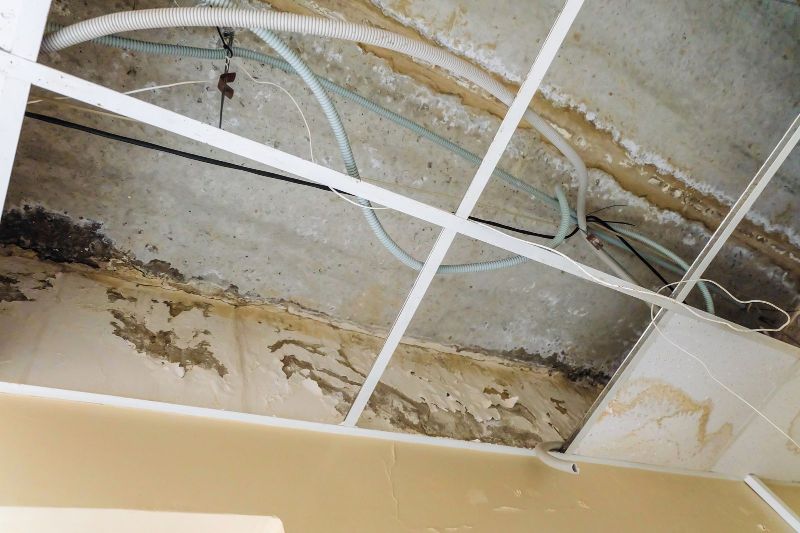Slab leaks are one of the most common plumbing problems homeowners face. They occur when the pipes underneath a concrete slab foundation break or leak. These leaks can cause significant damage to the foundation of a home and can lead to costly repairs if not addressed promptly. In this article, we will discuss the causes of slab leaks, how to detect them, and the best methods for repair.
Causes of Slab Leaks
There are several reasons why slab leaks occur. One of the most common causes is the age of the pipes. Over time, pipes deteriorate and become more vulnerable to cracks and leaks. Additionally, changes in the soil surrounding the foundation can cause shifts that put pressure on the pipes and cause them to break.
Another common cause of slab leaks is improper installation. When pipes are not installed correctly, they can be more susceptible to damage and leaks. Poor workmanship and the use of low-quality materials can also contribute to the problem.
Finally, slab leaks can occur due to environmental factors. For example, hard water can corrode pipes over time, leading to leaks. Extreme weather conditions, such as freezing temperatures, can also cause pipes to burst.
Detecting Slab Leaks
Detecting slab leaks can be challenging because they occur underneath the foundation of a home. However, there are several signs that homeowners can look out for that may indicate a slab leak is present.
One of the most obvious signs of a slab leak is a noticeable increase in the water bill. If there is a leak in the pipes, water will be continuously flowing, even when no one is using it. This can cause a significant increase in the water bill.
Another sign of a slab leak is the sound of running water when no faucets are turned on. This sound can often be heard coming from the walls or floors.
If there is a slab leak, there may also be hot spots on the floor. This occurs when hot water leaks into the foundation and causes certain areas of the floor to become warm.
Finally, a musty smell in the home can also indicate a slab leak. When water leaks into the foundation, it can cause mold and mildew to grow, leading to a musty odor.
Repairing Slab Leaks
Once a slab leak has been detected, it is essential to address it promptly to prevent further damage to the home. There are several methods for repairing slab leaks, each with its own advantages and disadvantages.
One of the most common methods of repairing slab leaks is through the use of epoxy injection. This involves injecting an epoxy resin into the pipes to seal the leak. This method is effective for smaller leaks and is relatively inexpensive.
Another method for repairing slab leaks is through the use of re-routing. This involves rerouting the pipes around the foundation and through the walls or ceiling. This method is more expensive than epoxy injection but is often necessary for larger leaks or for pipes that are too damaged to be repaired.
Finally, jackhammering is a method that involves breaking through the foundation to access the pipes. This method is the most invasive and expensive but is often necessary for severe leaks or for pipes that are too damaged to be repaired.
Preventing Slab Leaks
Preventing slab leaks from occurring in the first place is the best way to avoid costly repairs. One way to prevent slab leaks is by having the pipes inspected regularly. This will allow homeowners to catch any issues before they become more significant problems.
Additionally, homeowners can take steps to prevent pipes from freezing during extreme weather conditions. This can be done by insulating the pipes and keeping the home at a consistent temperature.
Another way to prevent slab leaks is by avoiding the use of harsh chemicals that can corrode the pipes. Homeowners should also be careful when planting trees or shrubs near the foundation of the home, as roots can grow into the pipes and cause damage.
It is also important to have the pipes installed correctly by a licensed and experienced plumber. This will ensure that the pipes are properly installed and less likely to break or leak.
Finally, homeowners should be aware of the signs of a slab leak and address them promptly. This will prevent further damage to the foundation and save money on repairs in the long run.
Slab leaks are a common problem that homeowners face, but they can be prevented and repaired with the right knowledge and resources. By understanding the causes of slab leaks, detecting them early, and using the proper repair methods, homeowners can avoid costly repairs and maintain the integrity of their home's foundation.
Regular inspection and maintenance of pipes can go a long way in preventing slab leaks. Homeowners should also be cautious when planting trees or shrubs near the foundation of the home, and be mindful of the signs of a slab leak.
When a slab leak is detected, it is essential to address it promptly to prevent further damage to the home. Epoxy injection, re-routing, and jackhammering are all effective methods for repairing slab leaks, depending on the severity of the leak.
In summary, slab leaks can be a significant problem for homeowners, but they can be prevented and repaired with proper knowledge and care. By taking preventative measures and addressing issues promptly, homeowners can maintain the integrity of their home's foundation and avoid costly repairs.
